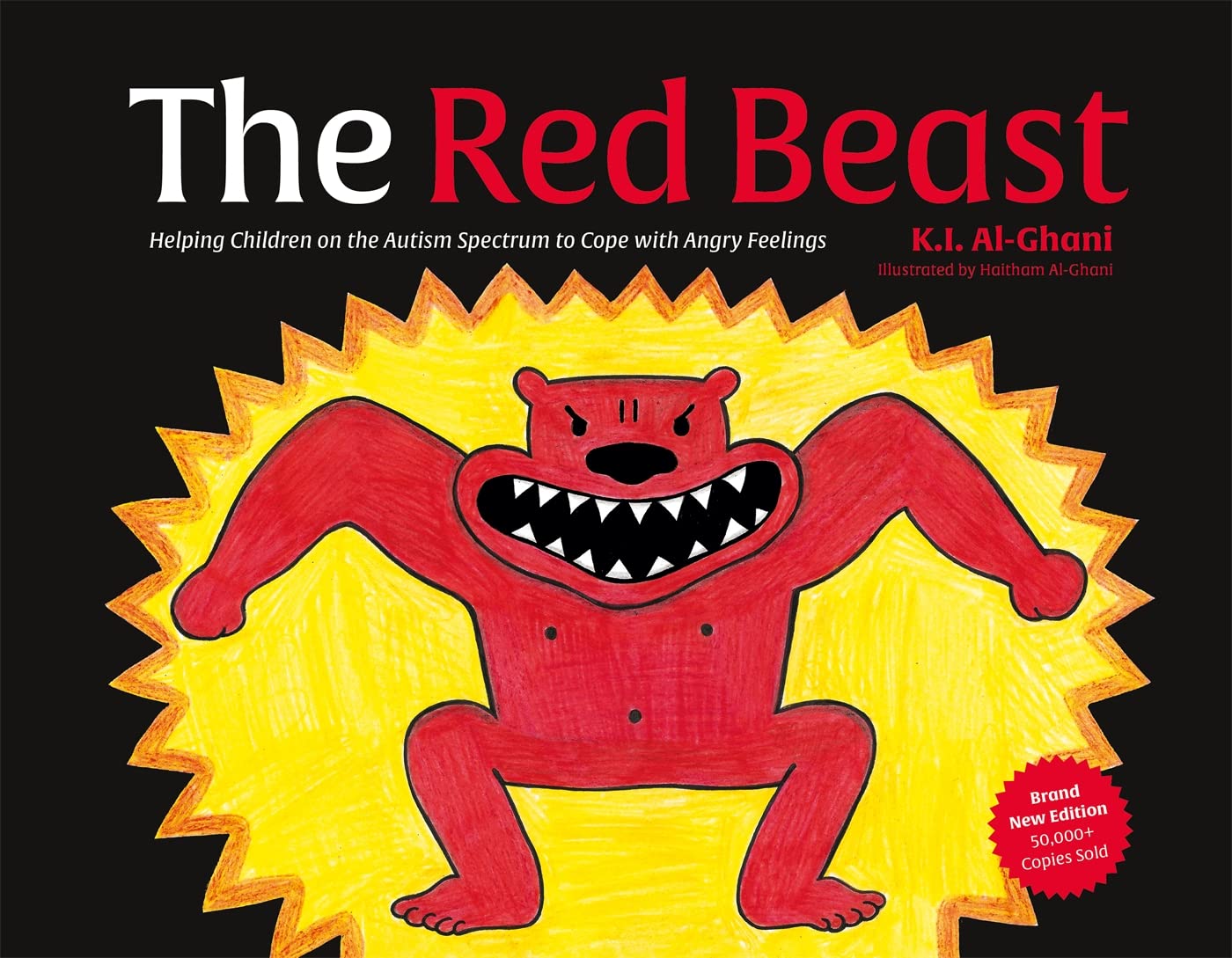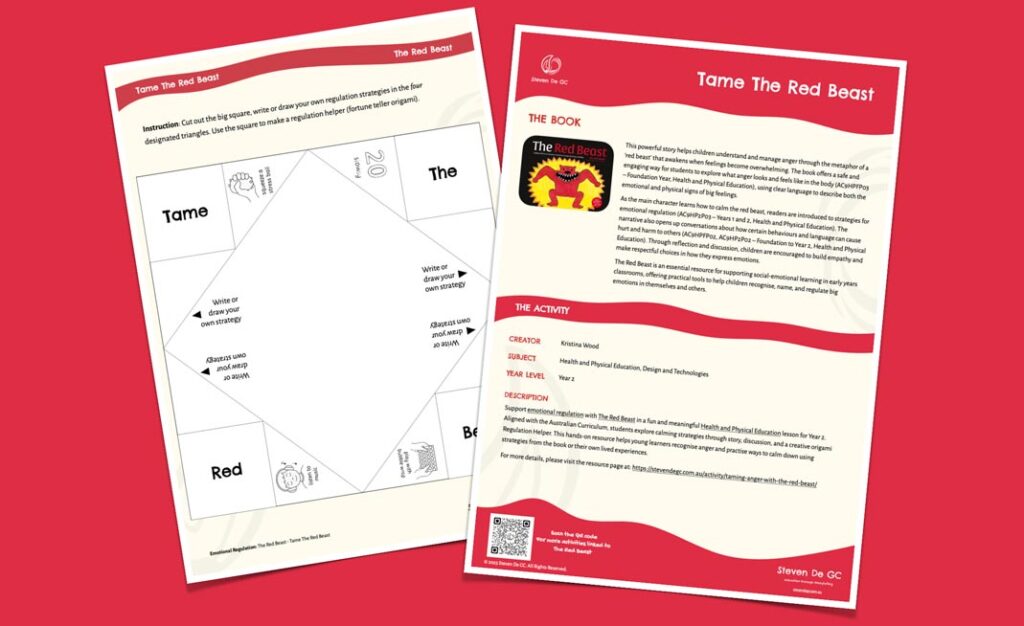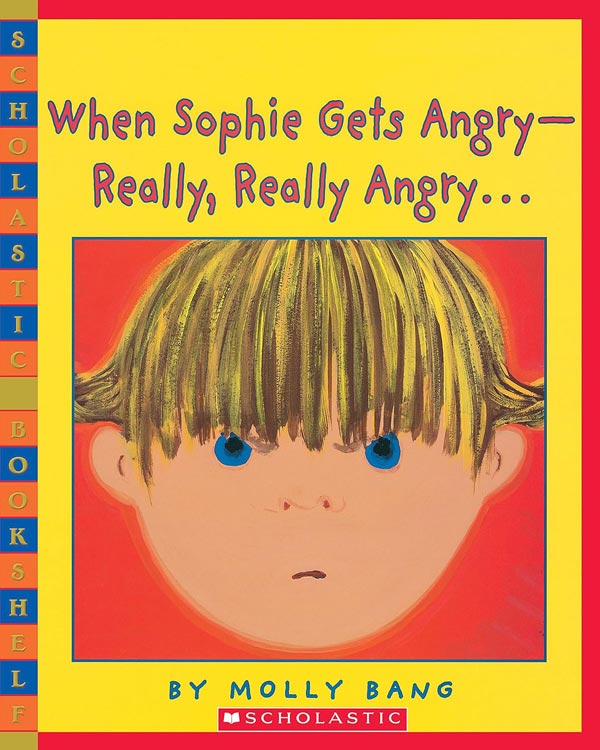The Red Beast by K.I. Al-Ghani is a powerful picture book that helps children recognise and regulate big emotions through an accessible and memorable metaphor. Centred on a child’s experience with anger, it provides rich opportunities to support emotional development and respectful relationships in the classroom.
Health and Physical Education
- AC9HPFP02 & AC9HP2P02: This book directly supports students to identify behaviours that cause hurt or harm to others and reflect on how their actions affect relationships. When Rufus becomes overwhelmed by the Red Beast, he lashes out—hitting a friend and shouting hurtful words like “I hate you. I’m gonna get you.” Teachers can use these moments to discuss what respectful relationships look like, how language and actions can impact others, and what it means to repair relationships. The story ends with Rufus calming down and apologising, demonstrating how making amends can restore connection.
- AC9HPFP03: Through vivid language and imagery, The Red Beast helps students describe what it feels like to be angry and recognise how emotions affect the body. The growing mouth, shrinking ears, and blurry eyes paint a clear picture of what happens during an emotional outburst. This encourages students to understand the physical signs of anger and begin identifying their own emotional responses. It opens the door for rich conversations about how the body reacts during big feelings.
- AC9HP2P03: As Rufus learns to calm his Red Beast, students are introduced to strategies for managing strong emotions. Techniques like breathing while counting, drinking water, and popping bubble wrap are not only age-appropriate but also easy for students to practise themselves. This supports learning around emotional regulation strategies, helping children build a toolbox for managing anger safely. Teachers can extend the learning by helping students identify which strategies work for them and when they might use them during the day.








Leave a Reply